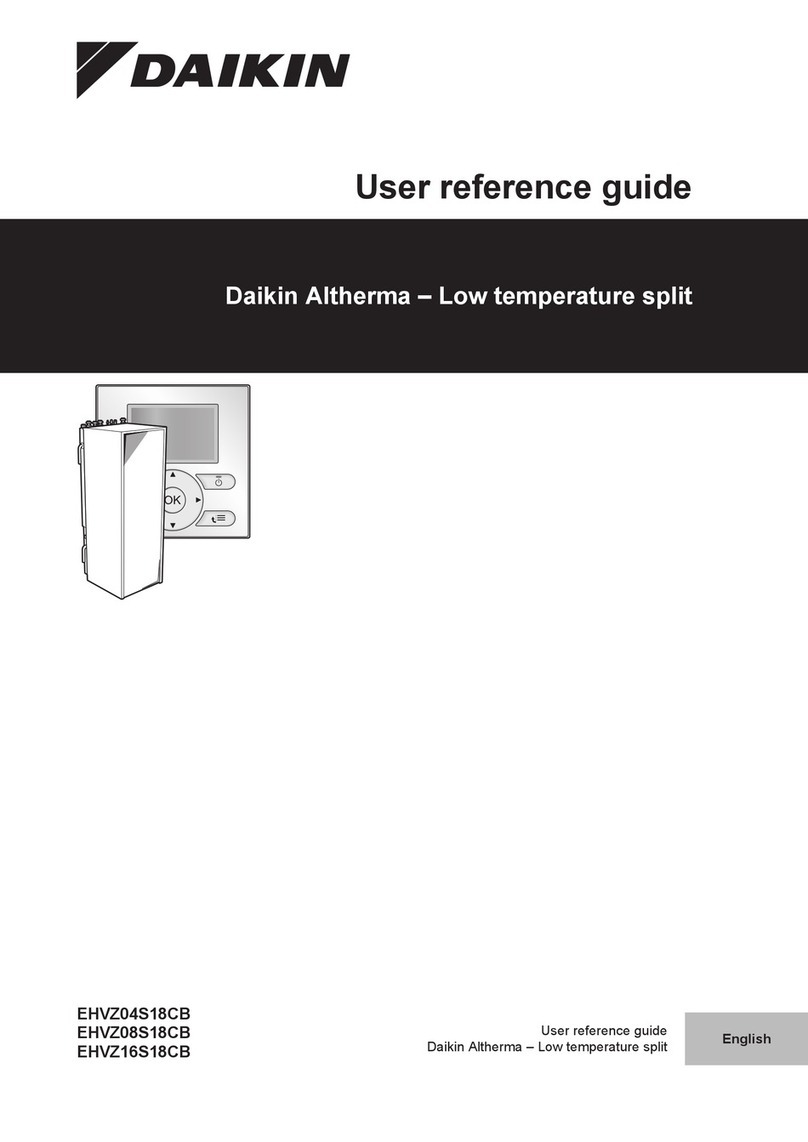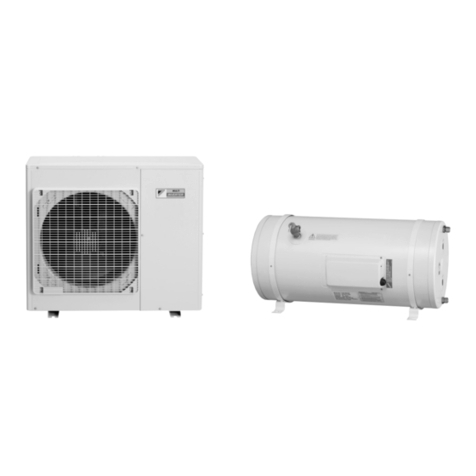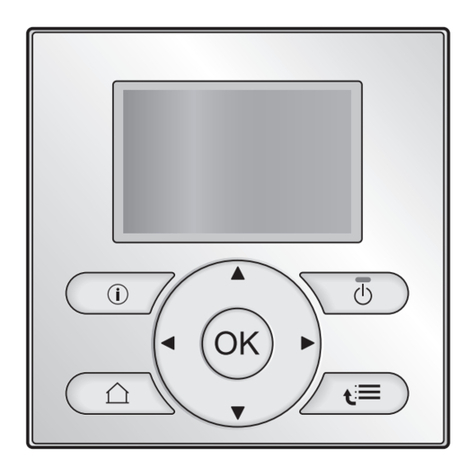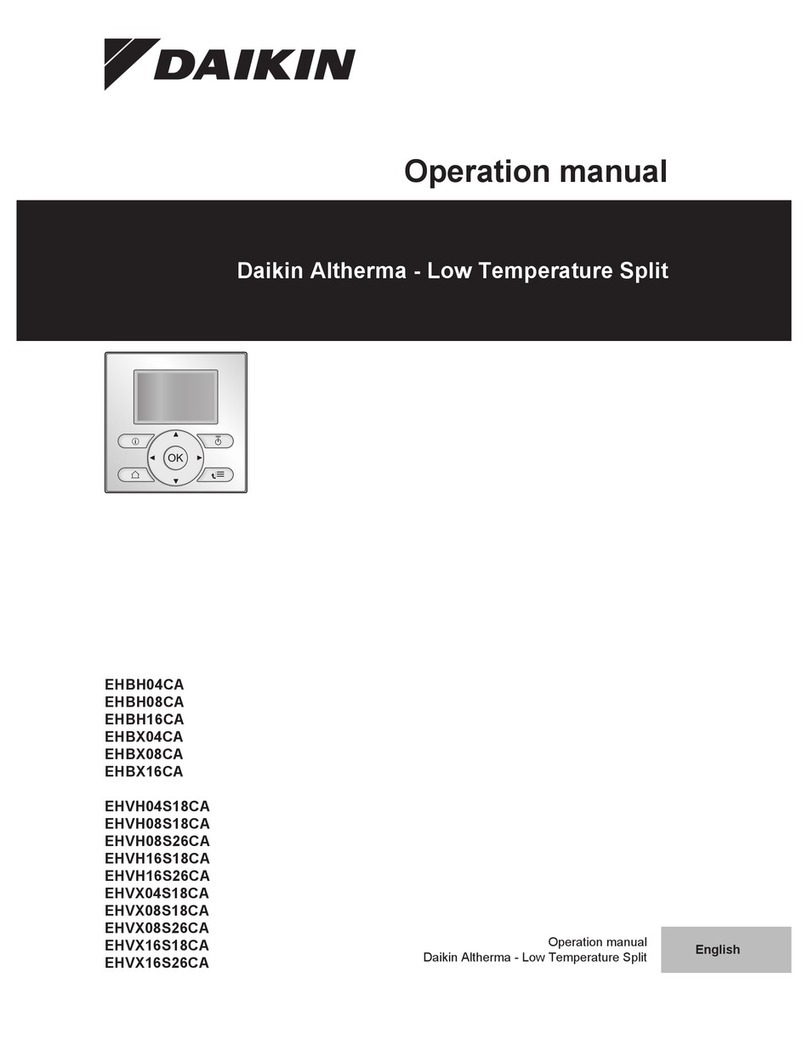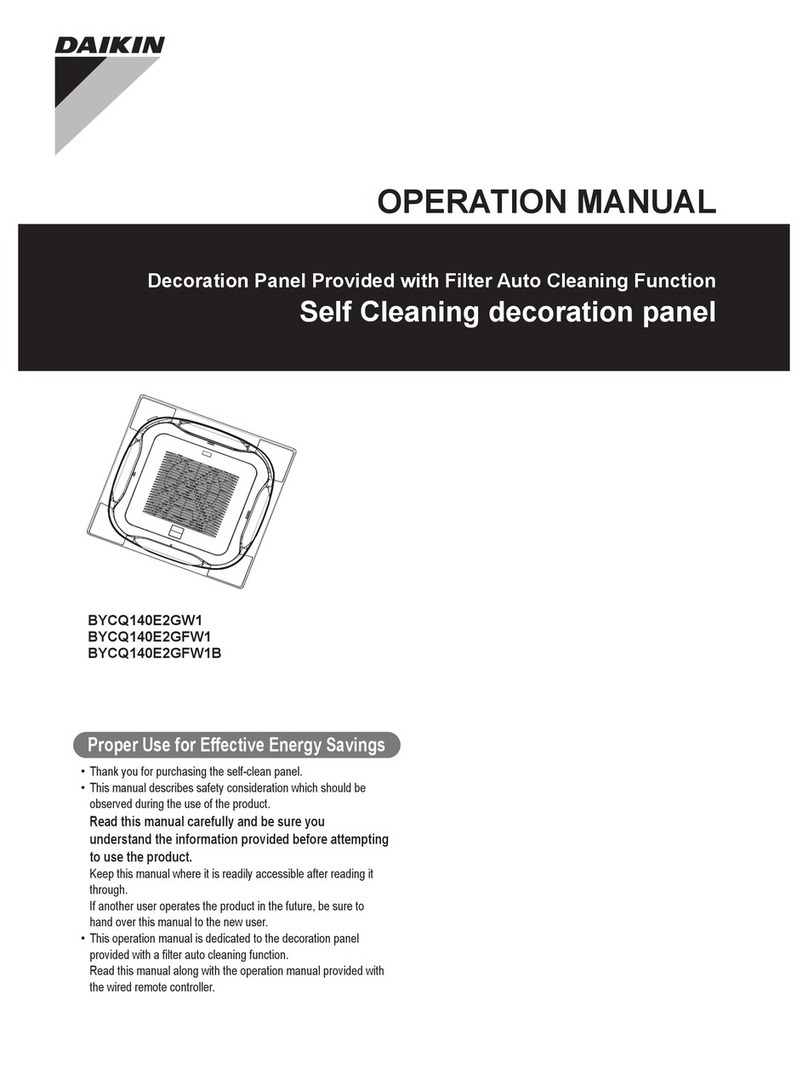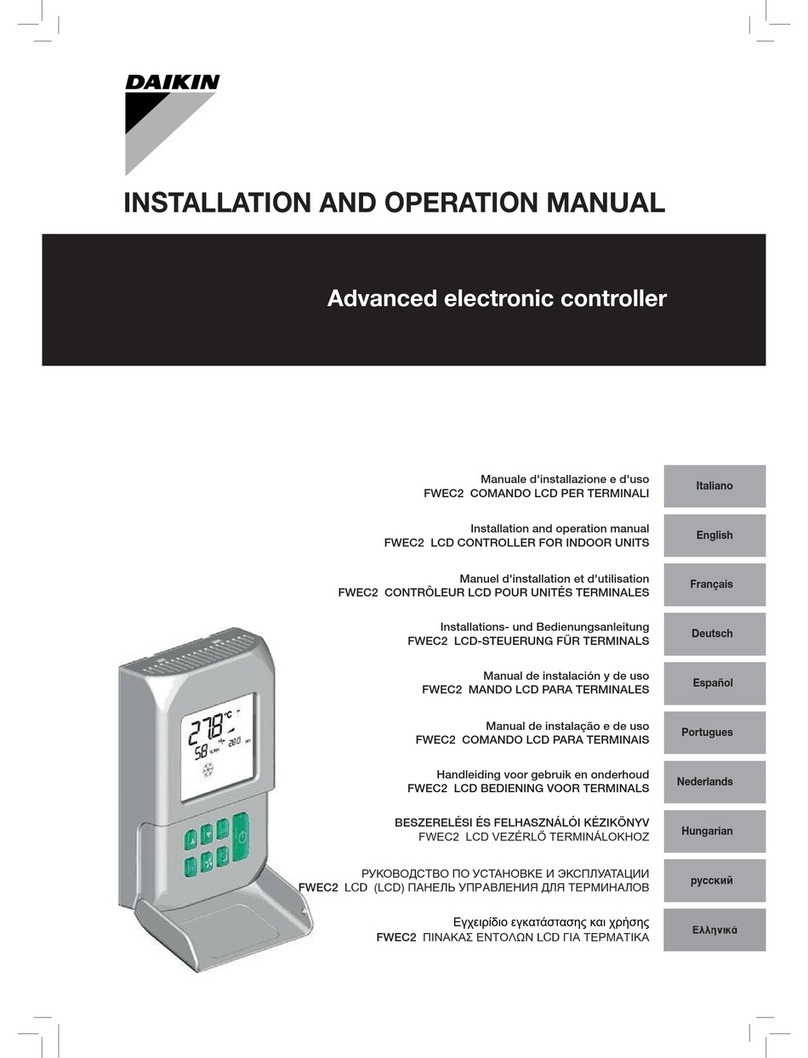
Table of Contents
Installer reference guide
2
ERHQ+ERLQ011~016 + EHVZ16S18CB
Daikin Altherma – Low temperature split
4P401677-1 – 2015.02
Table of Contents
1 General safety precautions 3
1.1 About the documentation .......................................................... 3
1.1.1 Meaning of warnings and symbols.............................. 4
1.2 For the installer.......................................................................... 4
1.2.1 General ....................................................................... 4
1.2.2 Installation site ............................................................ 4
1.2.3 Refrigerant .................................................................. 4
1.2.4 Brine............................................................................ 5
1.2.5 Water .......................................................................... 5
1.2.6 Electrical ..................................................................... 5
2 About the documentation 6
2.1 About this document.................................................................. 6
2.2 Installer reference guide at a glance ......................................... 6
3 About the box 7
3.1 Overview: About the box ........................................................... 7
3.2 Outdoor unit............................................................................... 7
3.2.1 To unpack the outdoor unit ......................................... 7
3.2.2 To handle the outdoor unit.......................................... 7
3.2.3 To remove the accessories from the outdoor unit....... 7
3.3 Indoor unit ................................................................................. 7
3.3.1 To unpack the indoor unit ........................................... 7
3.3.2 To remove the accessories from the indoor unit......... 7
4 About the units and options 8
4.1 Overview: About the units and options...................................... 8
4.2 Identification .............................................................................. 8
4.2.1 Identification label: Outdoor unit ................................. 8
4.2.2 Identification label: Indoor unit .................................... 8
4.3 Combining units and options ..................................................... 9
4.3.1 Possible options for the outdoor unit........................... 9
4.3.2 Possible options for the indoor unit............................. 9
4.3.3 Possible combinations of indoor unit and outdoor
unit .............................................................................. 10
5 Application guidelines 10
5.1 Overview: Application guidelines............................................... 10
5.2 Setting up the space heating system ........................................ 10
5.2.1 Multiple rooms – TwoLWT zones............................... 10
5.3 Setting up the domestic hot water tank ..................................... 11
5.3.1 System layout – Integrated DHW tank........................ 11
5.3.2 Selecting the volume and desired temperature for
the DHW tank.............................................................. 11
5.3.3 Setup and configuration – DHW tank.......................... 12
5.3.4 DHW pump for instant hot water................................. 12
5.3.5 DHW pump for disinfection ......................................... 12
5.4 Setting up the energy metering ................................................. 13
5.4.1 Produced heat............................................................. 13
5.4.2 Consumed energy....................................................... 13
5.4.3 Normal kWh rate power supply................................... 13
5.4.4 Preferential kWh rate power supply............................ 14
5.5 Setting up the power consumption control ................................ 14
5.5.1 Permanent power limitation ........................................ 14
5.5.2 Power limitation activated by digital inputs ................. 14
5.5.3 Power limitation process ............................................. 15
5.6 Setting up an external temperature sensor ............................... 15
6 Preparation 15
6.1 Overview: Preparation............................................................... 15
6.2 Preparing installation site .......................................................... 15
6.2.1 Installation site requirements of the outdoor unit ........ 16
6.2.2 Additional installation site requirements of the
outdoor unit in cold climates ....................................... 16
6.2.3 Installation site requirements of the indoor unit .......... 16
6.3 Preparing refrigerant piping....................................................... 17
6.3.1 Refrigerant piping requirements.................................. 17
6.3.2 Refrigerant piping insulation ........................................ 17
6.4 Preparing water piping ............................................................... 17
6.4.1 Water circuit requirements ........................................... 17
6.4.2 Formula to calculate the expansion vessel pre-
pressure ....................................................................... 18
6.4.3 To check the water volume and flow rate .................... 18
6.4.4 Changing the pre-pressure of the expansion vessel.... 19
6.4.5 To check the water volume: Examples ........................ 20
6.5 Preparing electrical wiring .......................................................... 20
6.5.1 About preparing electrical wiring.................................. 20
6.5.2 About preferential kWh rate power supply ................... 20
Overview of electrical connections except external
actuators ...................................................................... 21
6.5.3 Overview of electrical connections for external and
internal actuators ......................................................... 21
7 Installation 21
7.1 Overview: Installation ................................................................. 21
7.2 Opening the units ....................................................................... 22
7.2.1 About opening the units ............................................... 22
7.2.2 To open the outdoor unit.............................................. 22
7.2.3 To open the indoor unit ................................................ 22
7.2.4 To open the switch box cover of the indoor unit .......... 22
7.3 Mounting the outdoor unit........................................................... 22
7.3.1 About mounting the outdoor unit.................................. 22
7.3.2 Precautions when mounting the outdoor unit............... 23
7.3.3 To provide the installation structure ............................. 23
7.3.4 To install the outdoor unit............................................. 23
7.3.5 To provide drainage ..................................................... 23
7.3.6 To prevent the outdoor unit from falling over ............... 24
7.4 Mounting the indoor unit............................................................. 24
7.4.1 About mounting the indoor unit.................................... 24
7.4.2 Precautions when mounting the indoor unit................. 24
7.4.3 To install the indoor unit............................................... 24
7.5 Connecting the refrigerant piping ............................................... 24
7.5.1 About connecting the refrigerant piping ....................... 24
7.5.2 Precautions when connecting the refrigerant piping.... 25
7.5.3 Guidelines when connecting the refrigerant piping...... 25
7.5.4 Pipe bending guidelines............................................... 25
7.5.5 To flare the pipe end .................................................... 25
7.5.6 To braze the pipe end .................................................. 26
7.5.7 Using the stop valve and service port .......................... 26
7.5.8 To connect the refrigerant piping to the outdoor unit ... 27
7.5.9 To connect the refrigerant piping to the indoor unit ..... 28
7.5.10 To determine if oil traps are required ........................... 28
7.6 Checking the refrigerant piping .................................................. 28
7.6.1 About checking the refrigerant piping .......................... 28
7.6.2 Precautions when checking the refrigerant piping ....... 28
7.6.3 Checking refrigerant piping: Setup............................... 28
7.6.4 To check for leaks........................................................ 28
7.6.5 To perform vacuum drying ........................................... 29
7.7 Charging refrigerant ................................................................... 29
7.7.1 About charging refrigerant ........................................... 29
7.7.2 Precautions when charging refrigerant ........................ 29
7.7.3 To determine the additional refrigerant amount........... 29
7.7.4 To determine the complete recharge amount.............. 30
7.7.5 To charge refrigerant ................................................... 30
7.7.6 To fix the fluorinated greenhouse gases label ............. 30
7.8 Connecting the water piping....................................................... 30
7.8.1 About connecting the water piping............................... 30
7.8.2 Precautions when connecting the water piping............ 30
7.8.3 To connect the water piping......................................... 30
7.8.4 To connect the recirculation piping .............................. 31
7.8.5 To connect the pressure relief valve to the drain......... 31
7.8.6 To fill the water circuit .................................................. 31
7.8.7 To fill the domestic hot water tank ............................... 32
7.8.8 To insulate the water piping ......................................... 32
7.9 Connecting the electrical wiring.................................................. 32
7.9.1 About connecting the electrical wiring.......................... 32
7.9.2 About electrical compliance ......................................... 32
